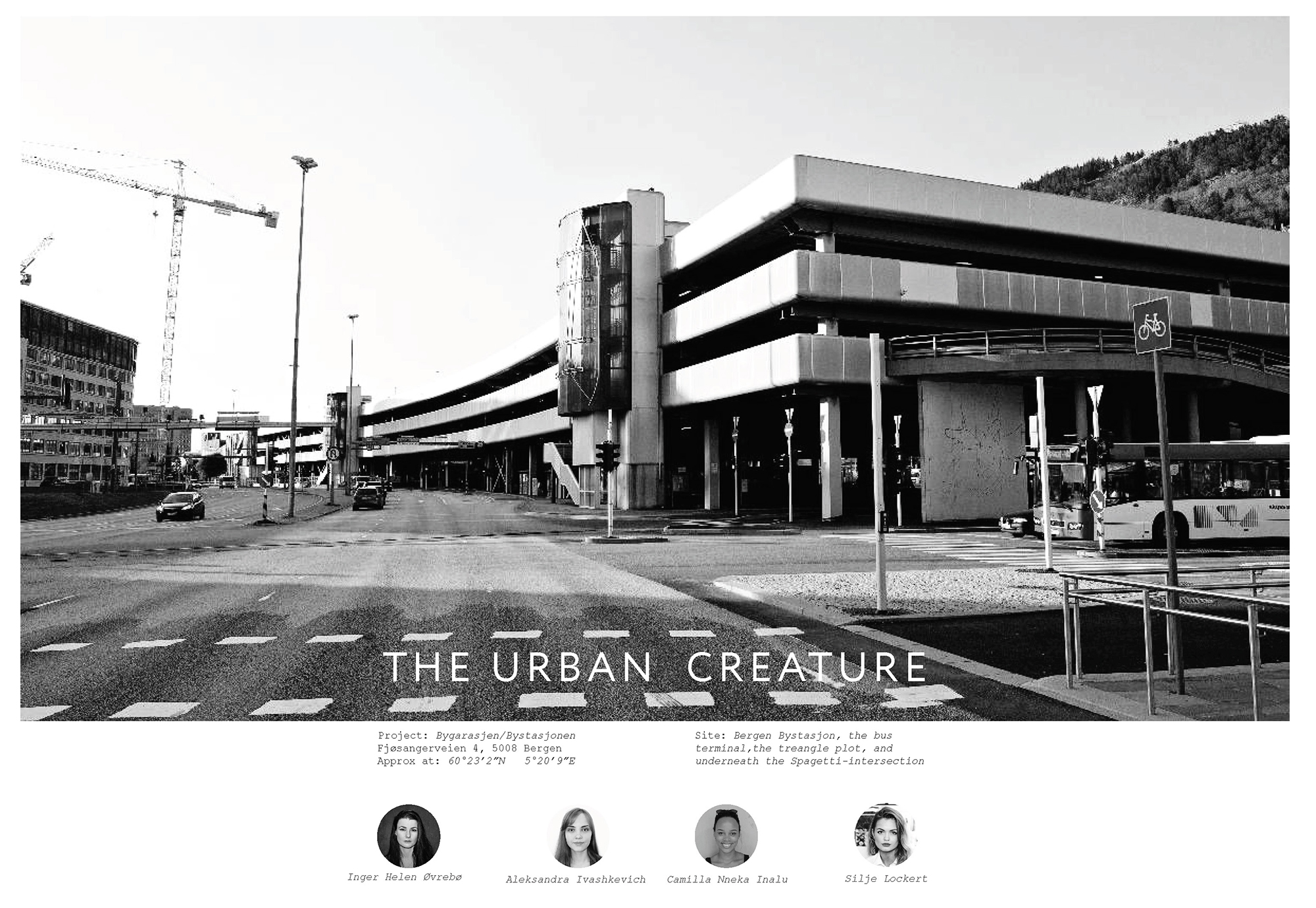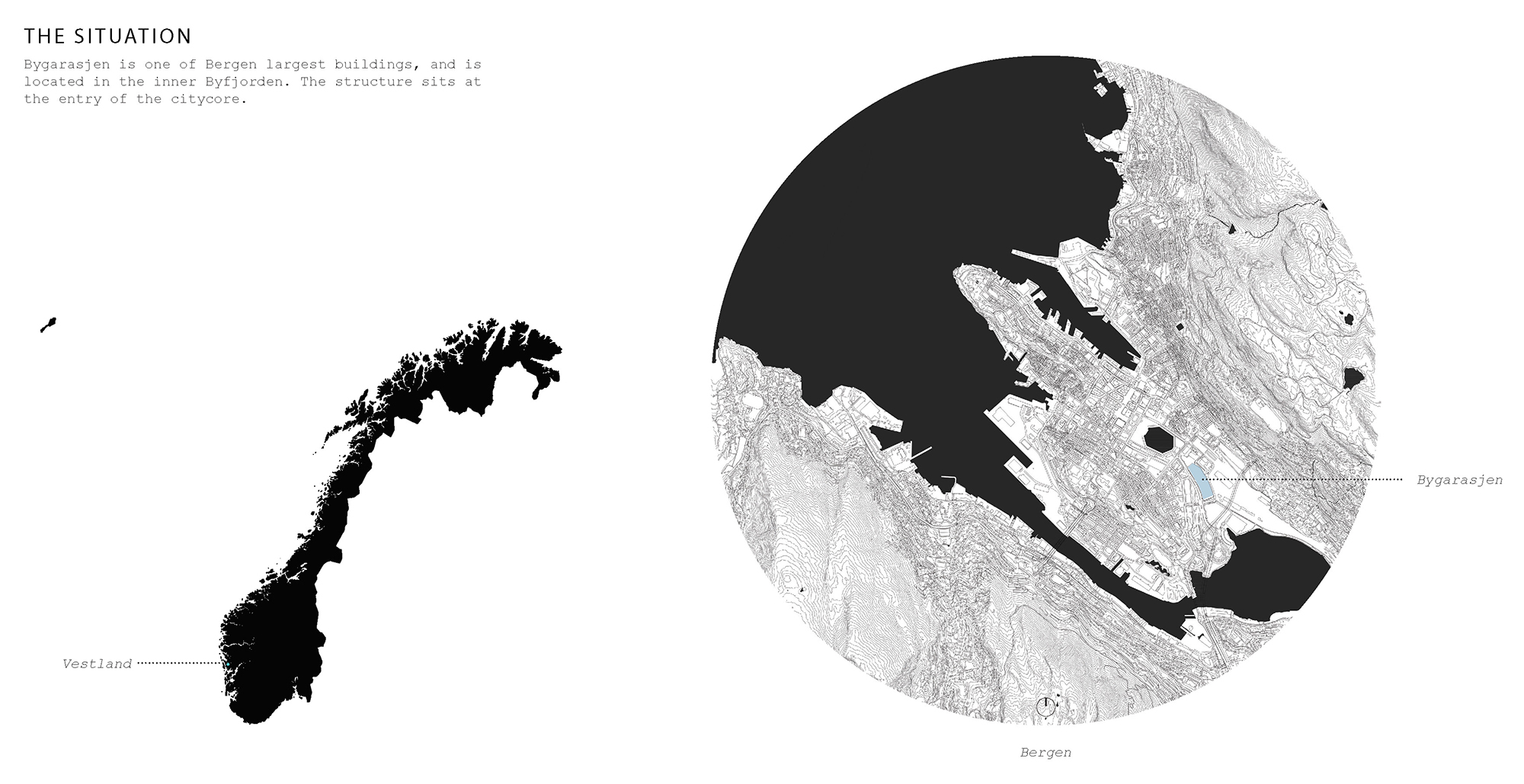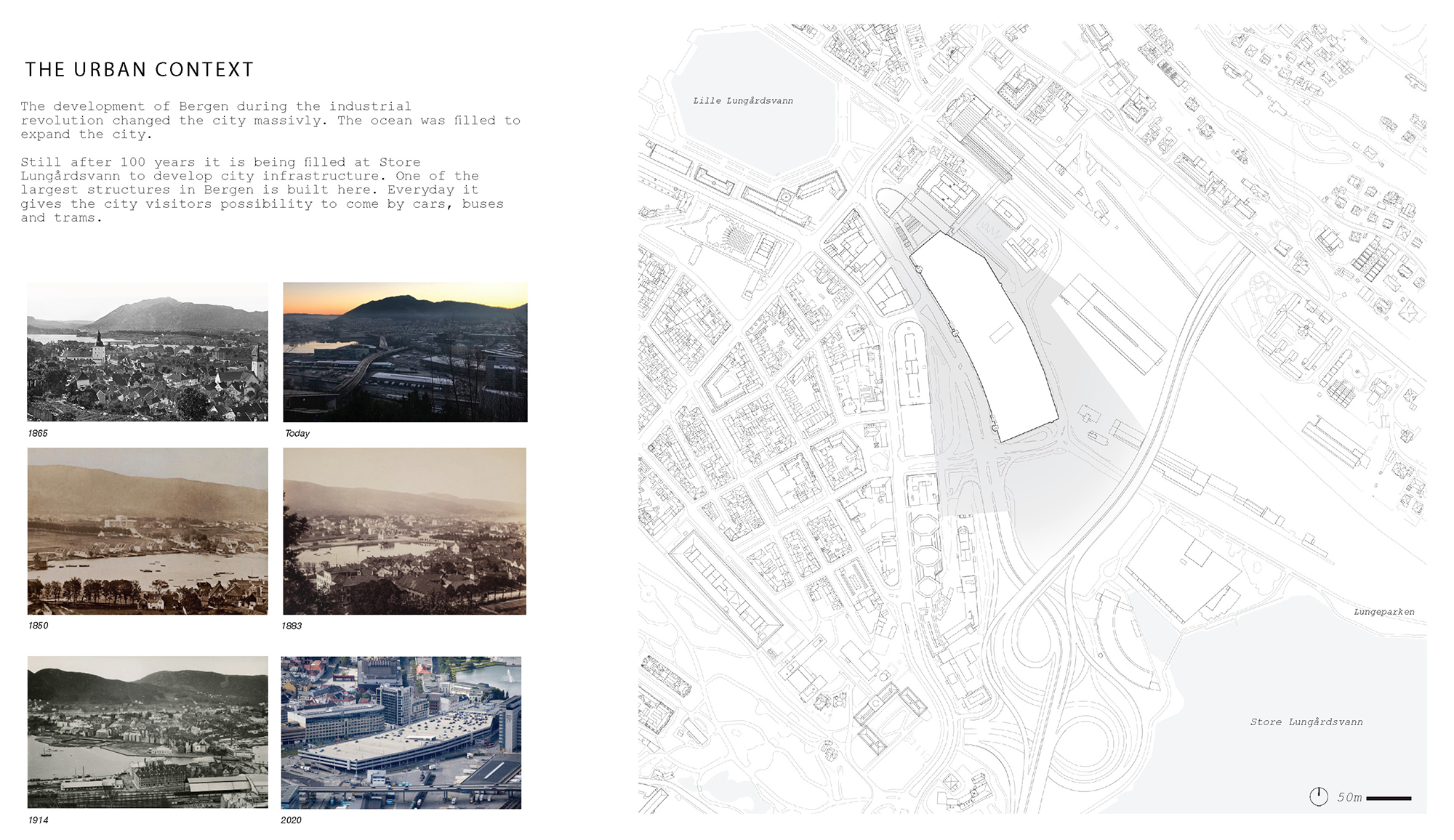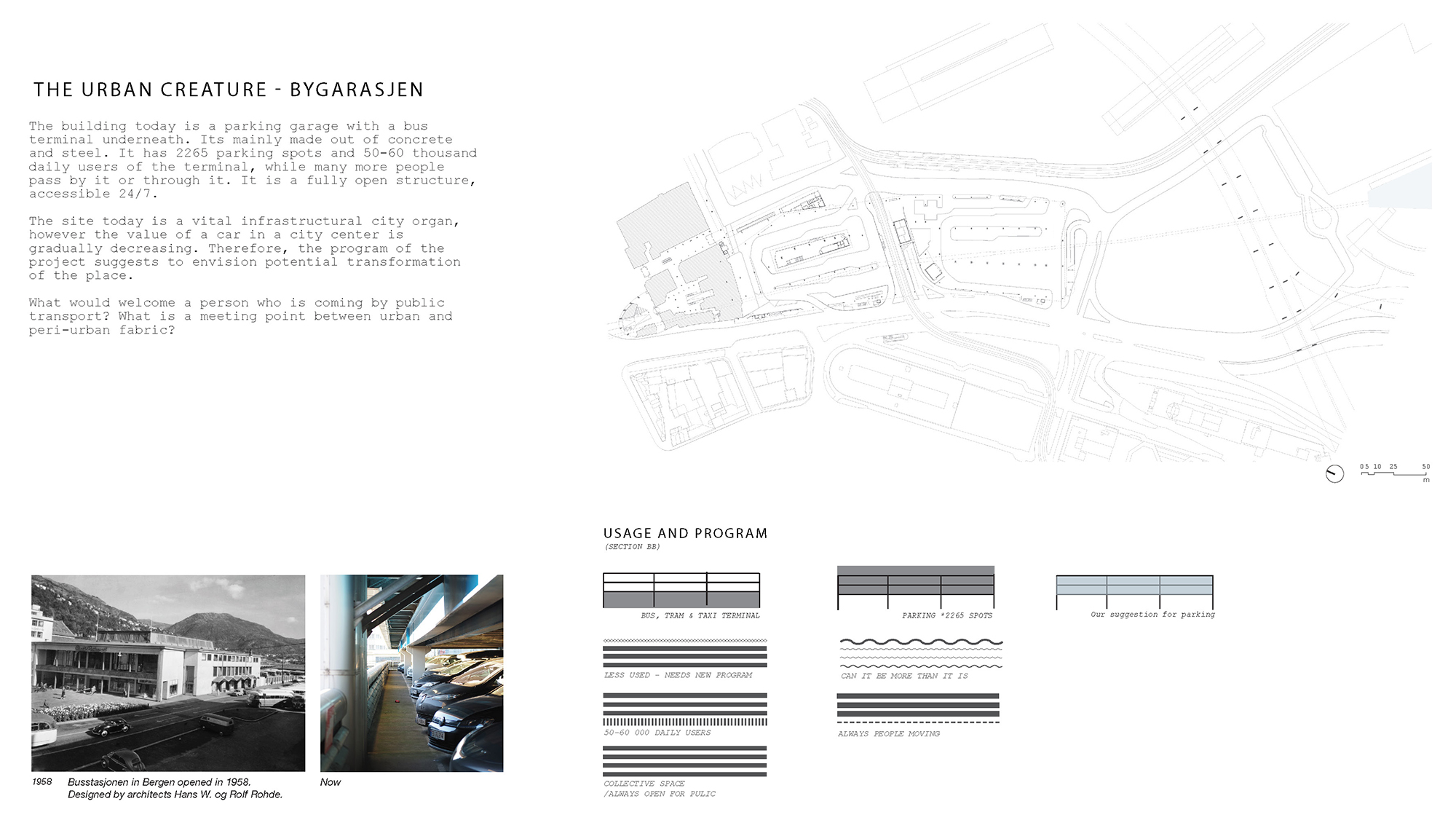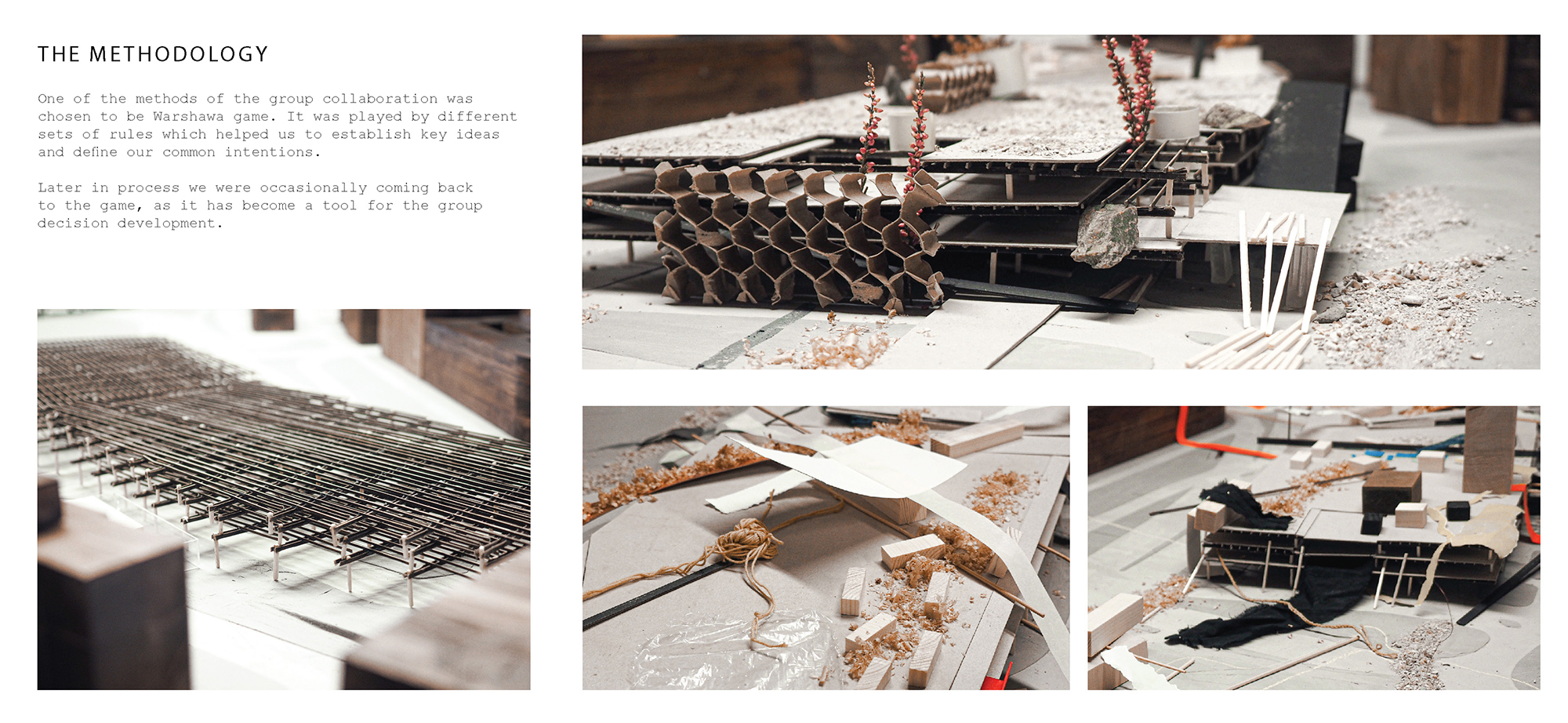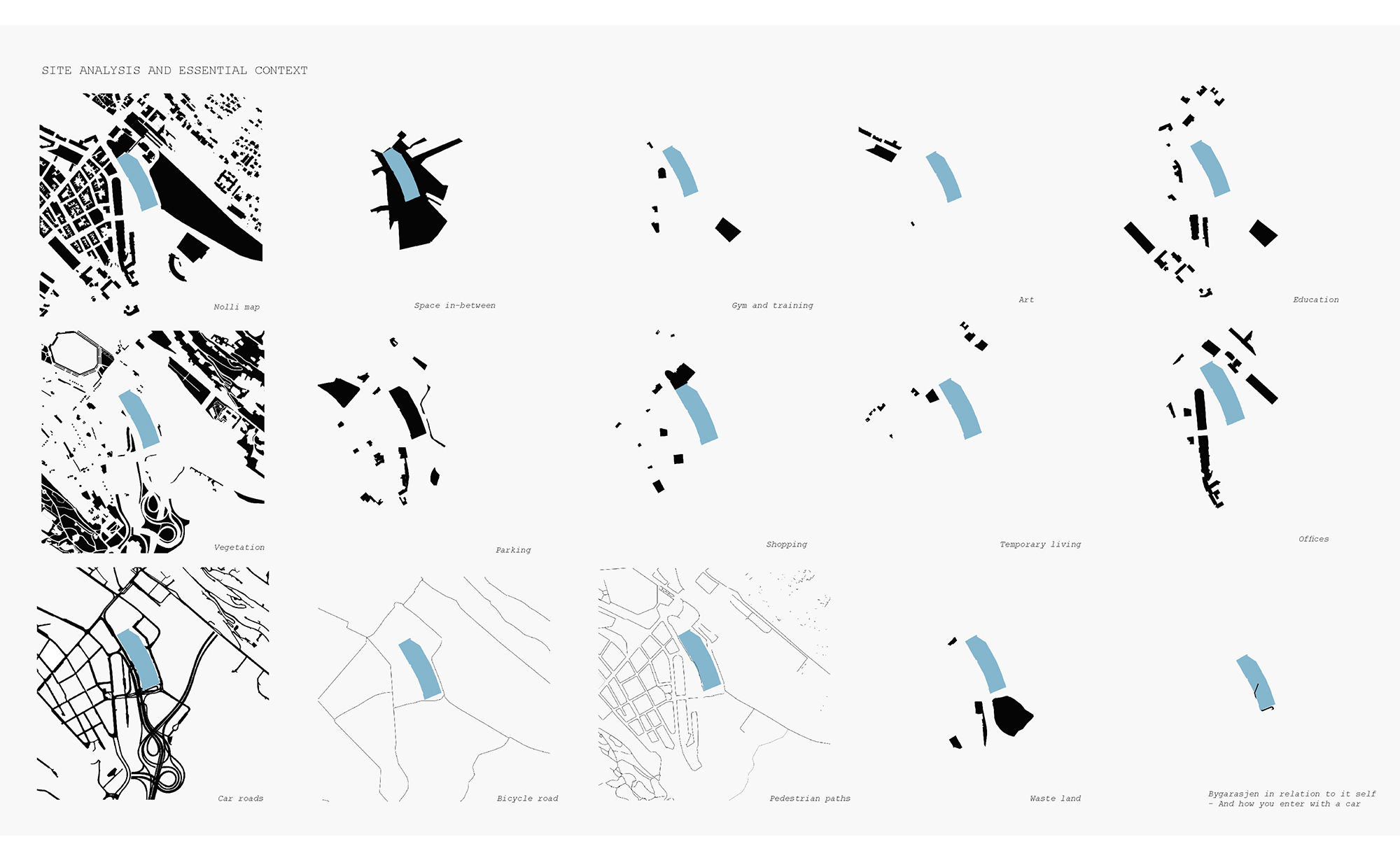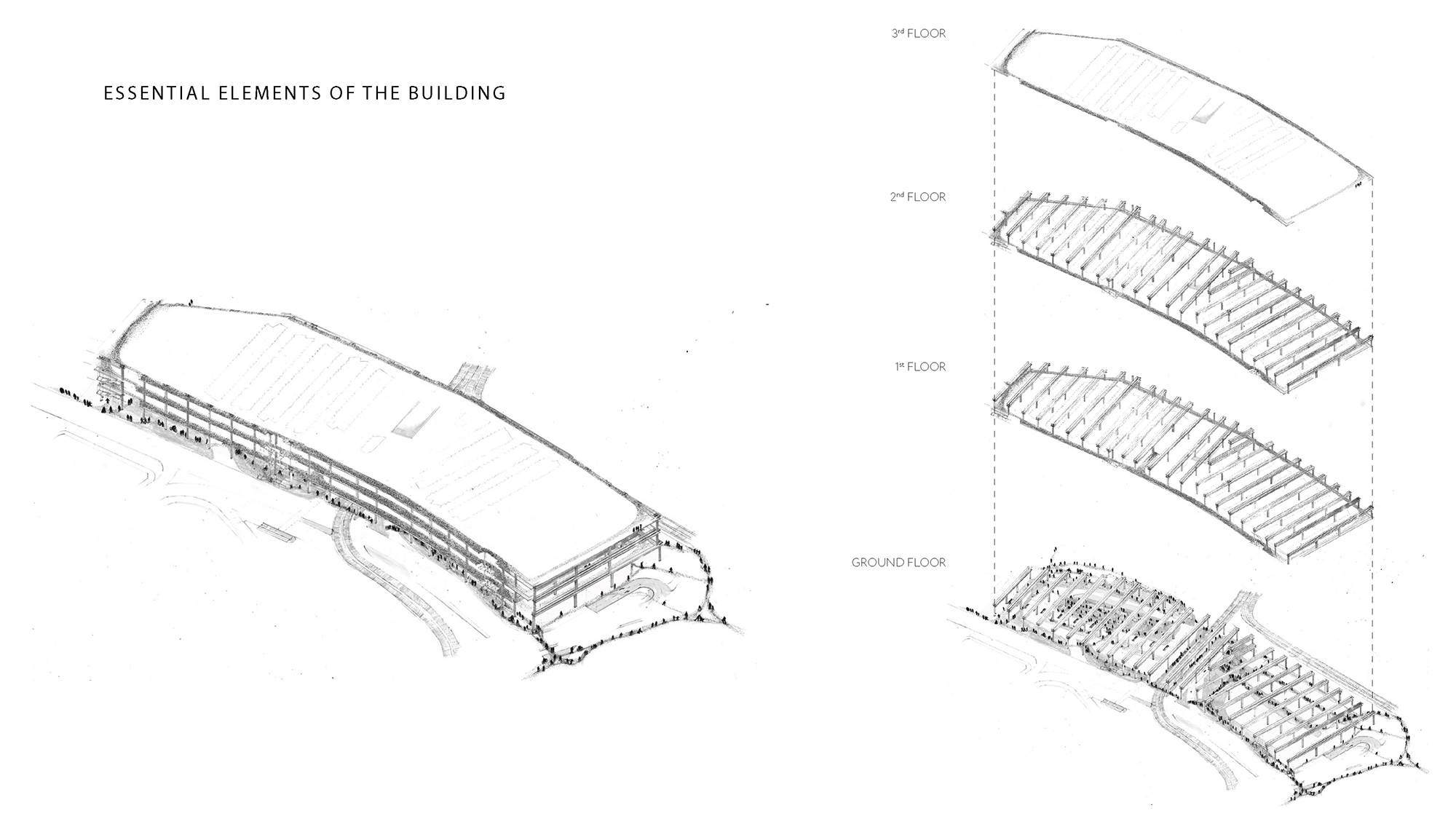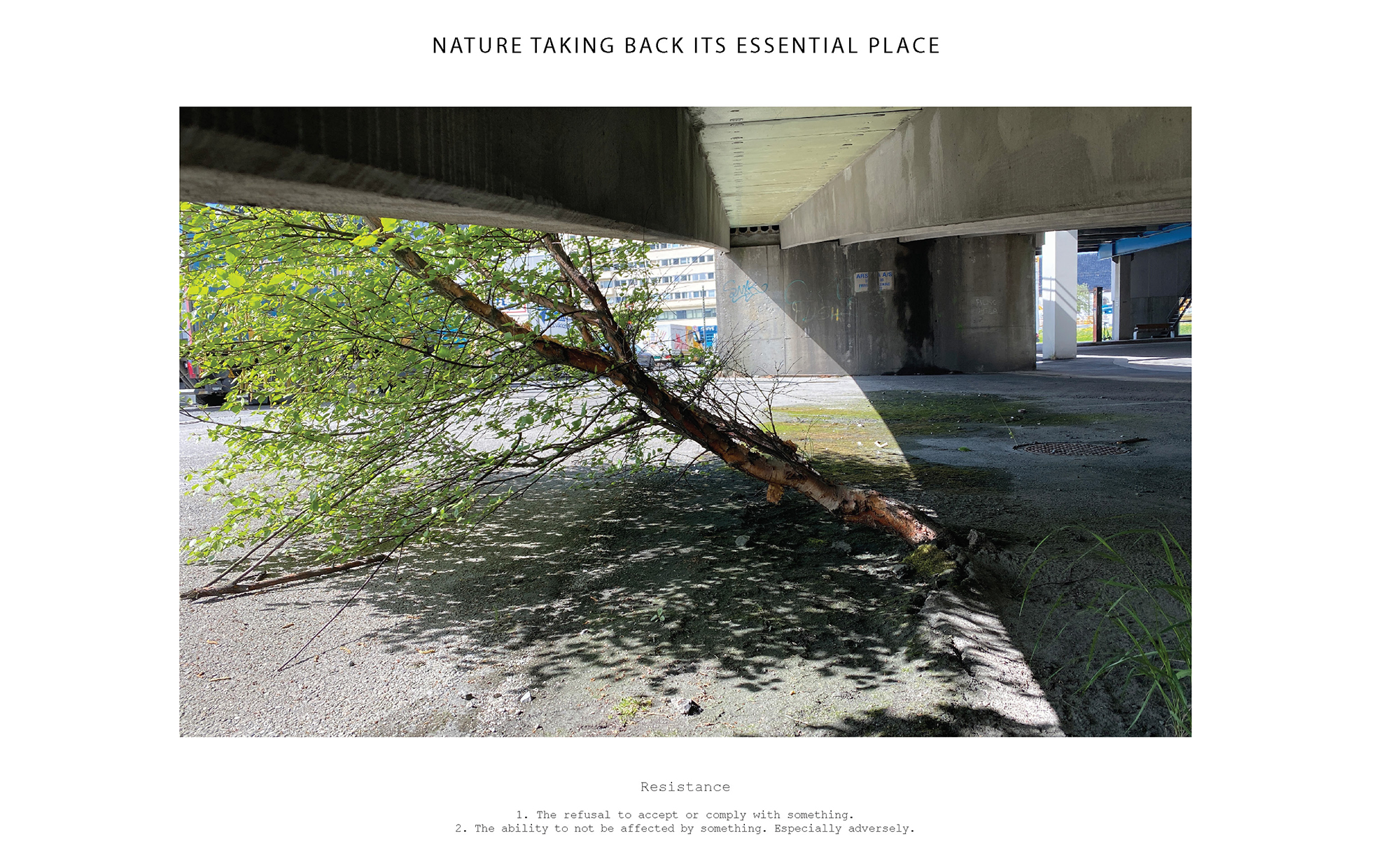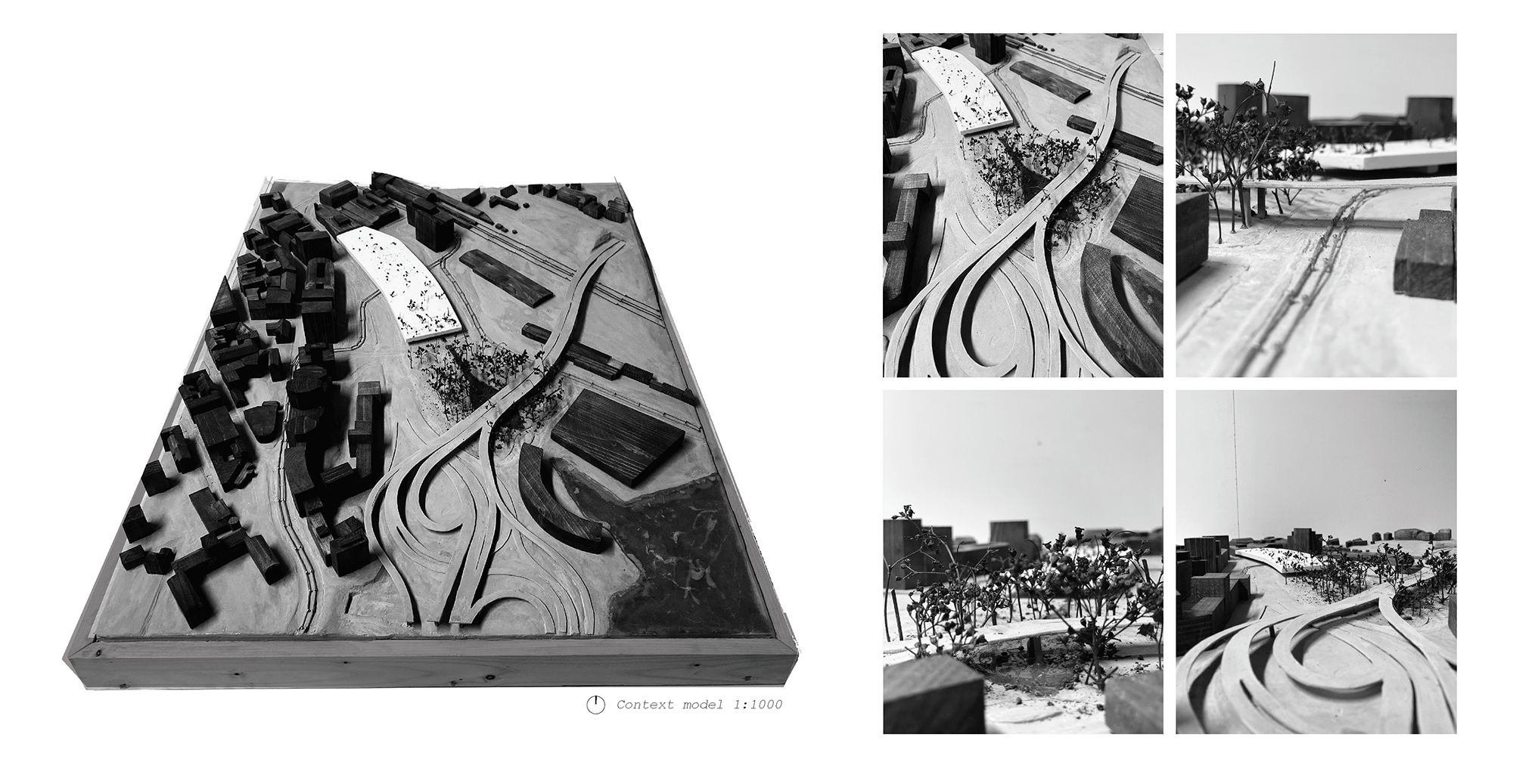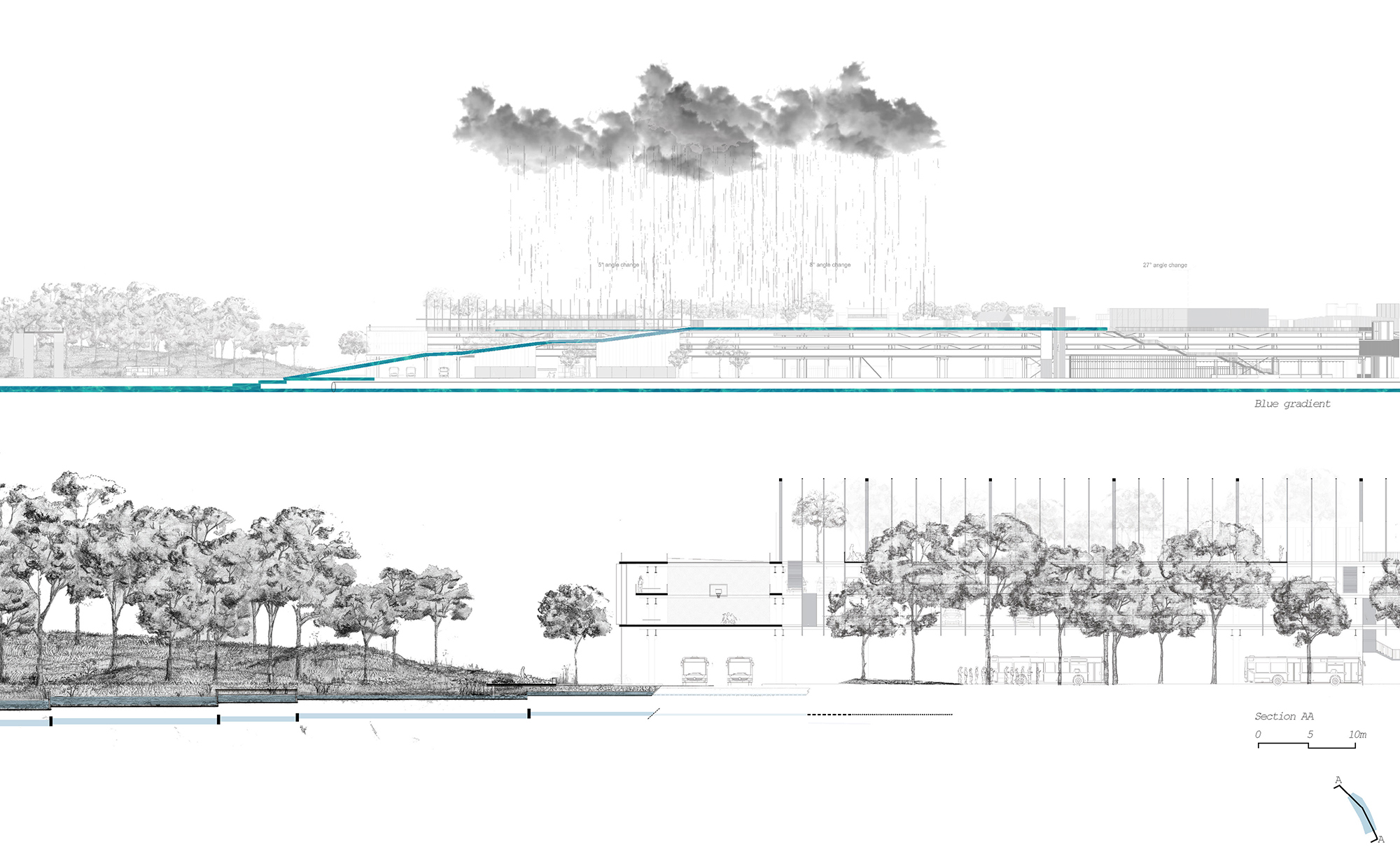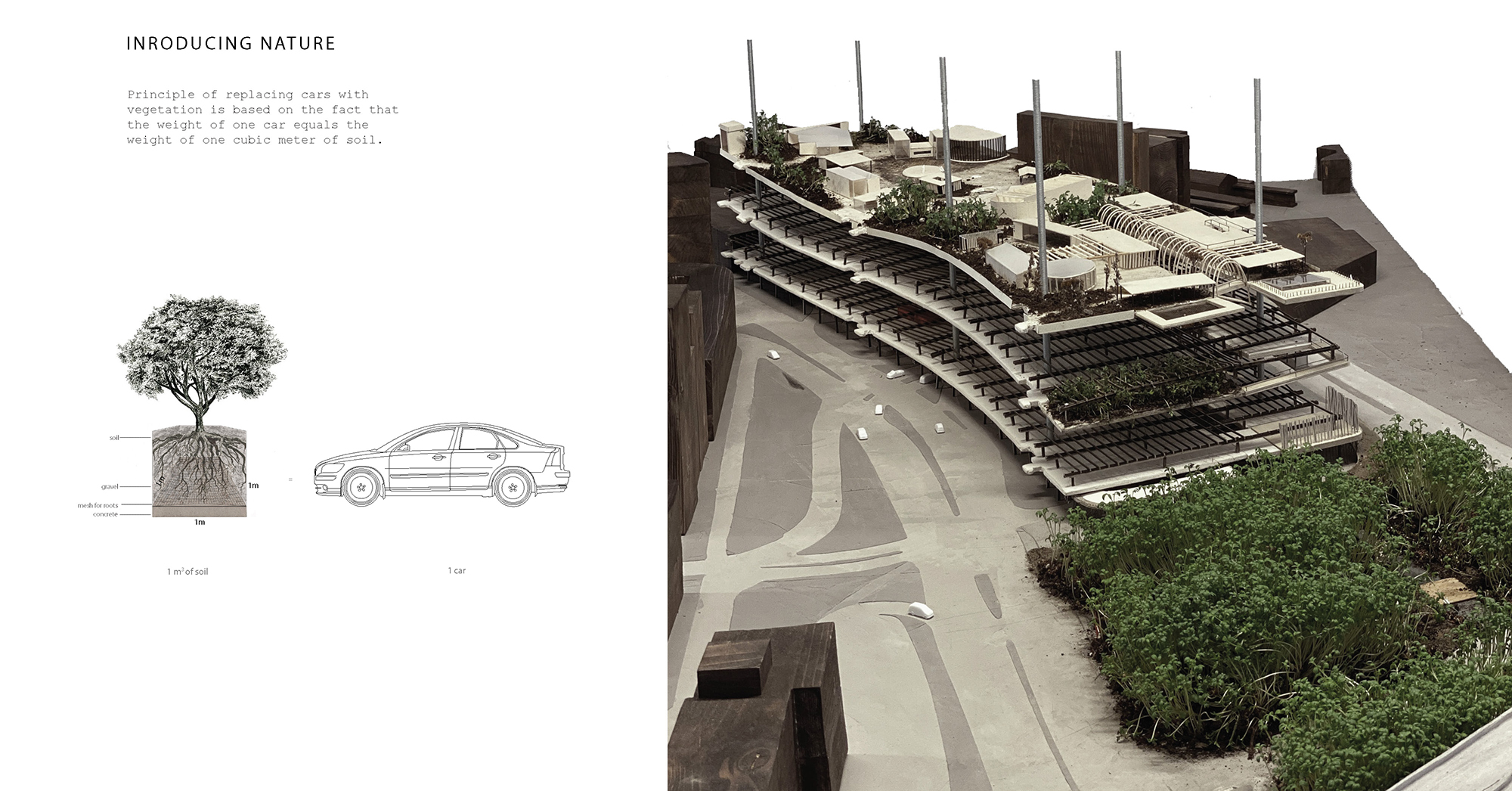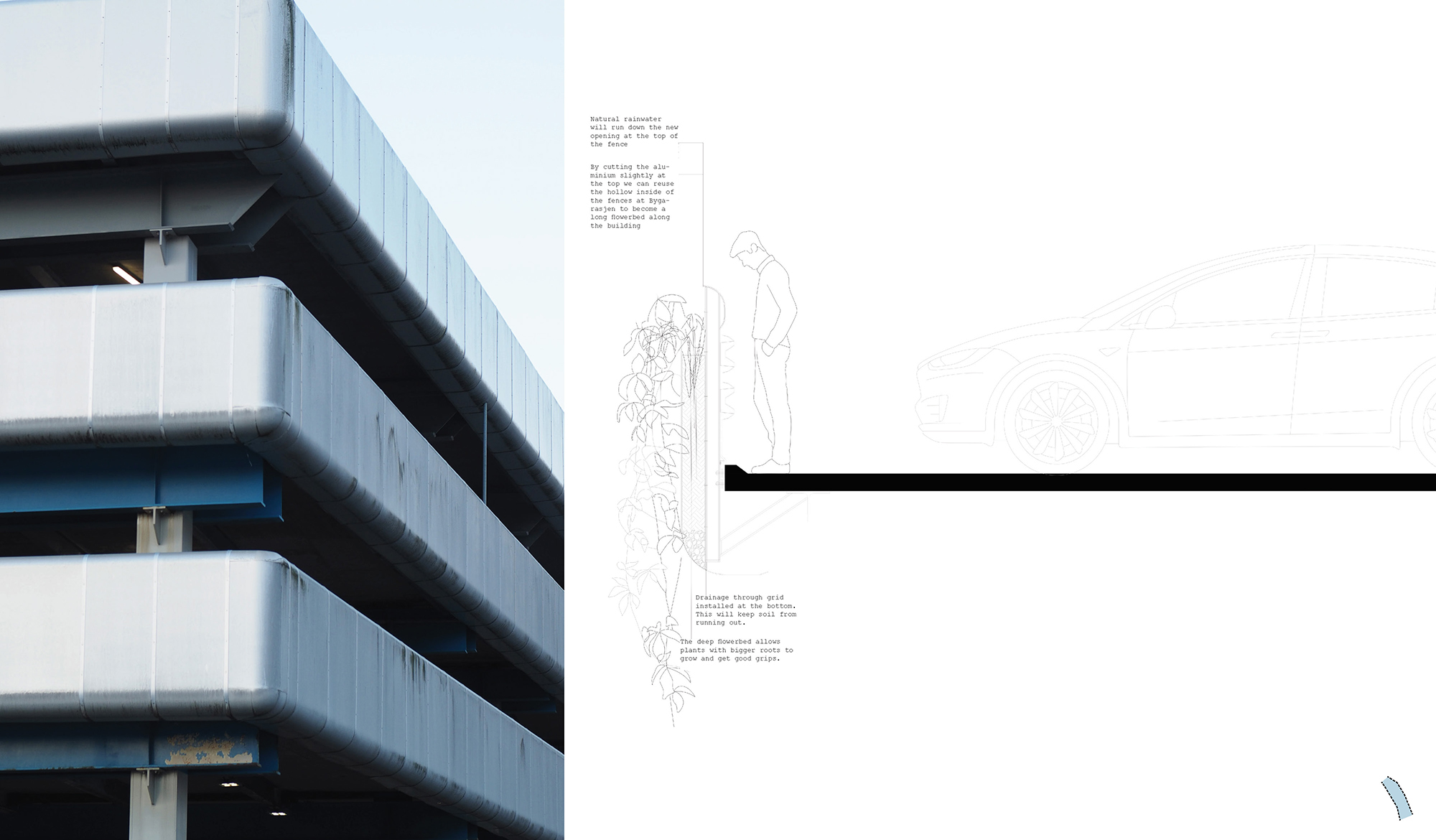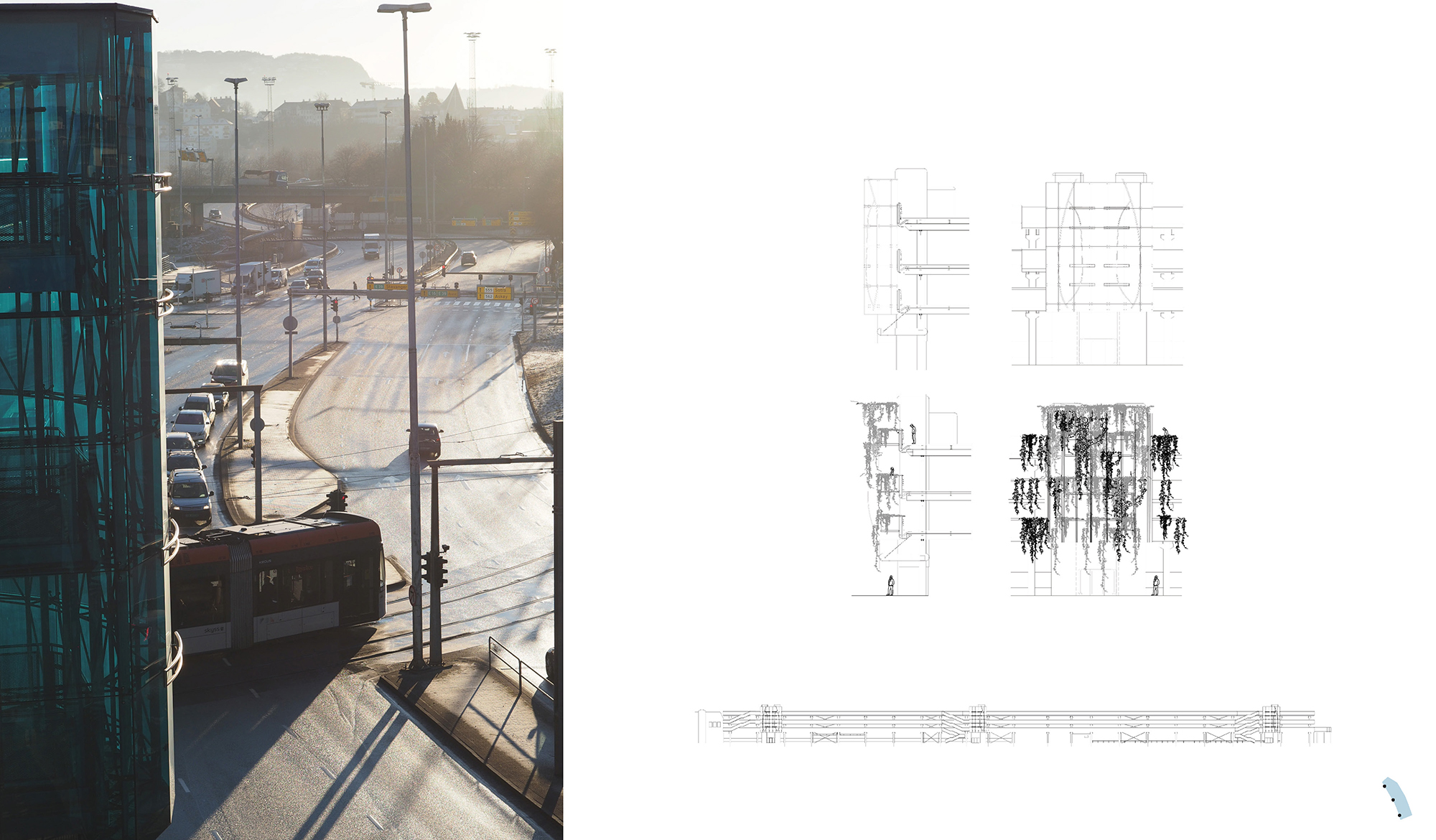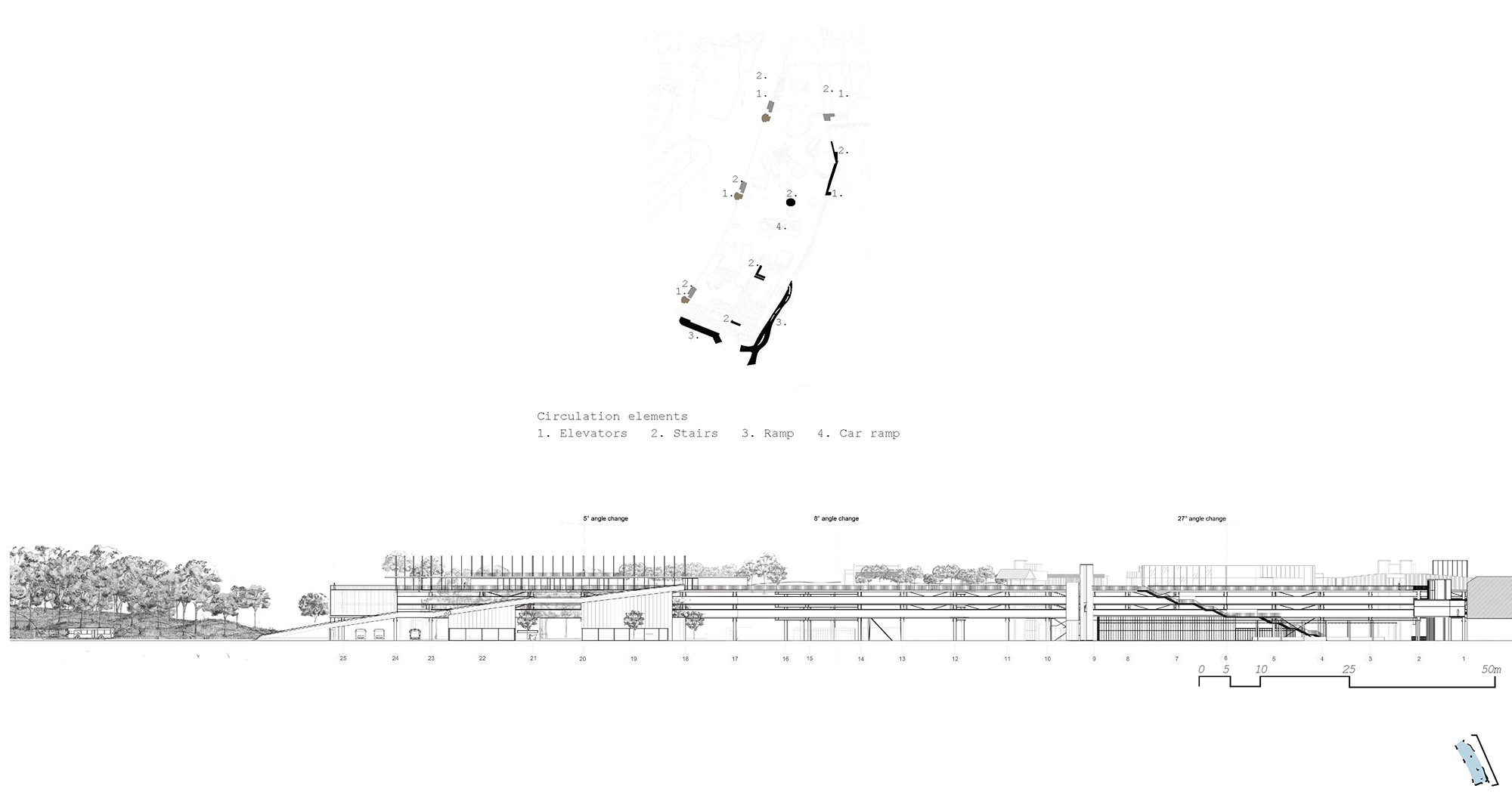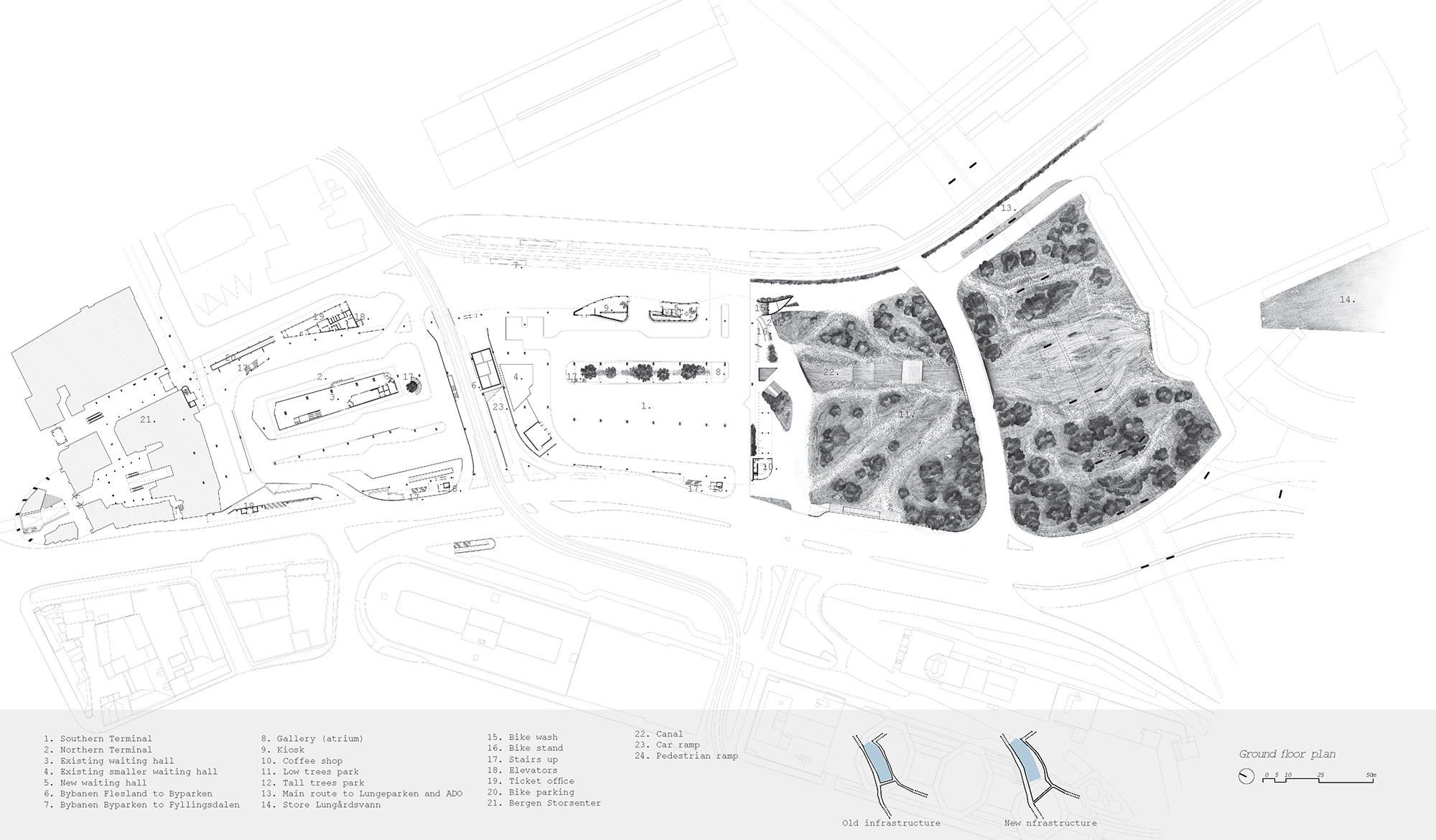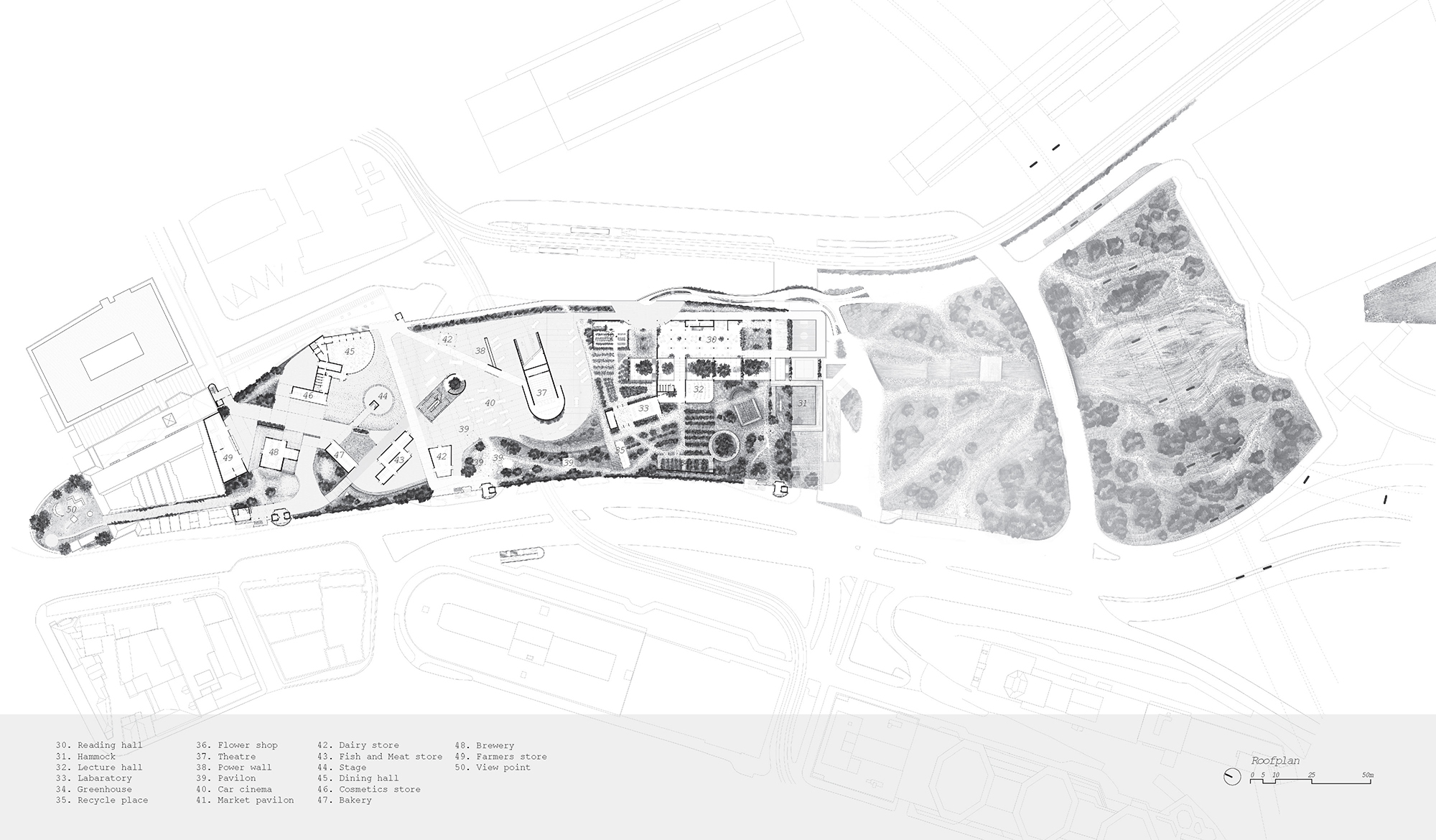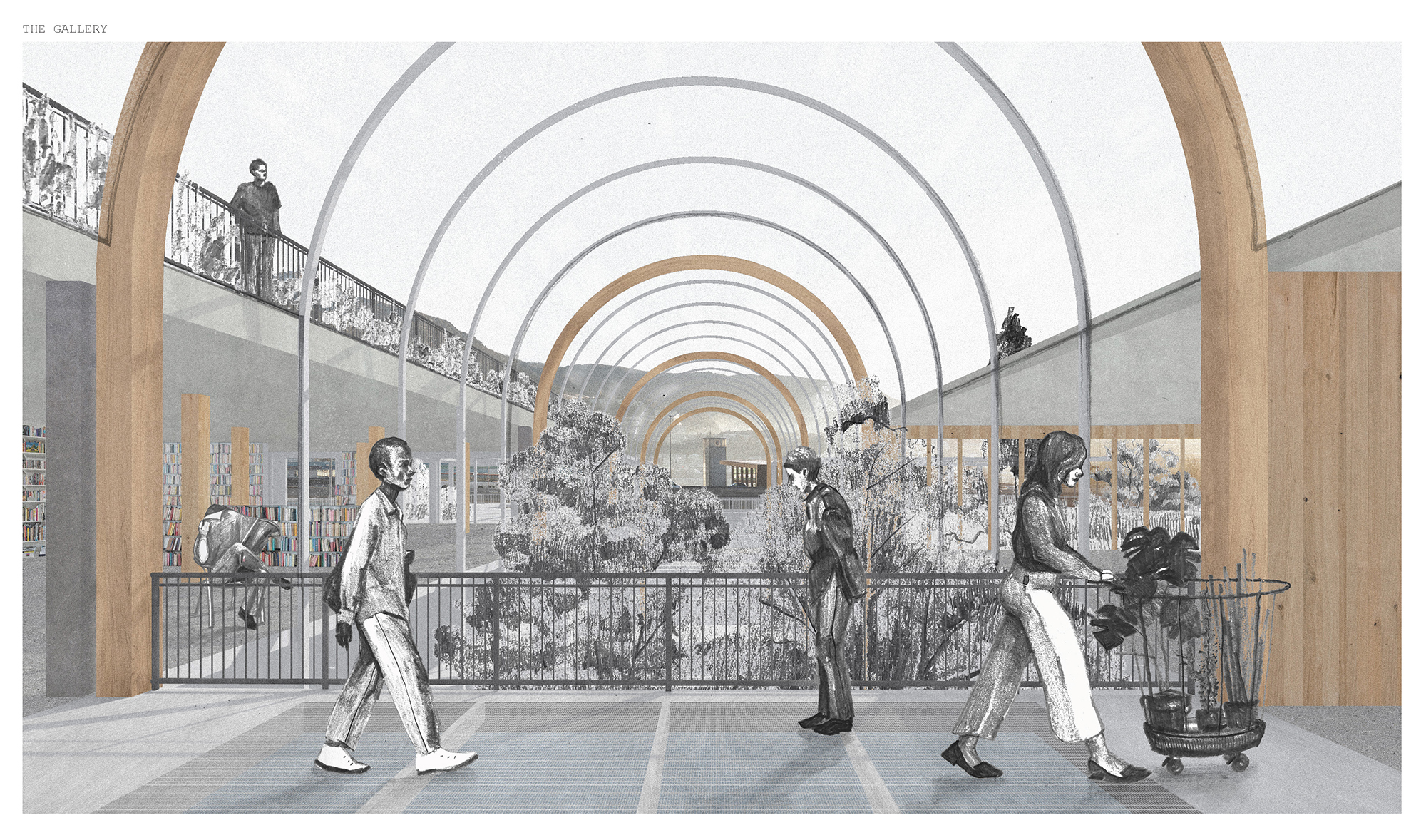THE URBAN CREATURE - BYGARASJEN
Inger Helen Øvrebø, Camilla Nneka Inalu, Aleksandra Ivashkevich and Silje Lockert
Our project -The Urban Creature- aims to reform the entry point of Bergen so that this becomes a vibrant part of the city.We wanted to find out how we can retune and reuse a building such as a parking garage of this size in the city, making it into a vibrant green lunge for the city to enjoy for years to come. We wanted to show that a terminal and a place of parking, a fully open and public building can turn into something much more without the need to remove the core of it, its pre-existing program and that it can evolve over time into something else.
The area today creates a grey belt where nature is absent and void becomes monumental in the human scale, only fragmented by the car and buses. The site ecology was determining its inhabitants and with time was tamed, and became determined by its inhabitants. The water has since the 30s been lying under this belt, which used to connect what today is The Big and The Small Lungegårdsvannet.
In our process we considered the current function and pre-existing qualities of the place to be important, and our intention was to re-naturalize the area. The overall idea for our proposal is to create a gradient where we try to re-introduce nature, and give nature space to grow, and along this gradient harvest from nature, in a question of - could we introduce a community garden for a more sustainable living in the city?
Along our path of reform, an inclusive program that speaks to the neighborhood of this city part and the humans using this building on a daily basis through parking or commuting has been important qualities to consider. A space that grows with the city. Where you can come together in different ways; meeting, reading, gardening, learning. An idea of a marketplace in the city, like selling carrots from your car and eat bread made by local craft production; and still have enough parking to offer. The roof could be just the place for this new city part.
The attitudes and findings along our path in the course of re-form was shaped from our different collaborations and tasks. We tried to keep our process open, so we could shape it as we investigated how to remake and rethink the spaces of and in Bygarasjen. We worked with models and drawings to communicate within the group, firstly individually, then by rounds of Warszawa game with different set of rules, and then by swapping models and drawings entirely. Our project grew from being about a place to stay and be, breaking up the asphalt and retuning entirely parts and functions on the roof and façade of Bygarasjen to give it back to its users. To give it to the city. Reform should be a term of the future city, and how can cities become more sustainable and self-supplied? Can it start with growth and reuse of buildings that might be loosing its relevance in the years to come?
